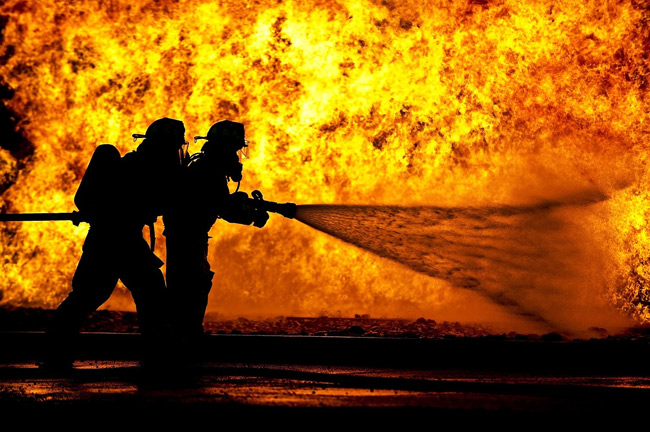
Firefighters face many risks during their jobs, but, ironically, the most dangerous part of running into a burning building isn’t the flames, it’s the smoke. It billows off furniture, appliances and carpets in toxic waves of cancer-causing fumes. That’s how about 60 percent of career firefighters will die, according to the international association of fire fighters. Cancer has become the number one cause of death for firefighters around the country. Hear how the men and women who save lives are now working to save their own …
Eugene hull has been with Georgia’s Columbus fire department for 34 years … and he’s spent 27 of them battling more than just fires.
A diagnosis of synovial sarcoma lead to the amputation of hull’s right arm 10 years ago.
“I remember going home, riding down the road and I was crying like a baby and my wife asked me, what’s wrong with you, and I said that’s a part of my life that I’ll never do again,” said Hull.
Hull was able to return to work in a new roll: training the next generation of firefighters.
And part of that training now includes protecting themselves from what is believed to be the biggest threat against their lives: cancer.
Hull told Ivanhoe, “We used to fight fire with no mask. You know, a badge of honor was to have dirty turnout gear, and we’ve learned now that it’s important that we wear our mask and it’s important that we clean our gear and we stay clean.”
In 2013, researchers studied 20-thousand firefighters who went on an average of six-thousand fire runs between 1950 and 2009. Twenty percent of them developed cancer. Compare that to the rate for the general US population, which is eight percent. The most common firefighter cancers are prostate, lung, colorectal and leukemia.
“The fires of today are different than they were 30 years ago … it burns a lot hotter, a lot quicker and it gives off a lot more toxic smoke,” Hull told Ivanhoe.
Flame retardants alone double the amount of smoke. One study found that levels of flame retardant chemicals in a firefighter’s blood were three times higher right after a fire.
Retired firefighter James Horn shows the innovative ways the city of Orlando fire department in Florida is reducing the potential risk of occupational cancer.
The holes for the fire poles are covered to prevent diesel exhaust from drifting into the sleeping area.
And each firefighter has more than one set of gear which is thoroughly cleaned after every fire call.
Horn is proud and comforted by the extra precautions, even though it comes too late for him and his older brother Michael. They often worked the same shift and fought the same fires … and around the same time 20 years ago, they both developed cancer, for Horn … sarcoma, and for Michael … malignant melanoma.
Horn said, “His later spread from the lymph node to the brain which ultimately killed him.”
It’s a story that has touched just about every fire department in America. But both men agree: the love of the job conquers any fears of the risk for most firefighters.
Thirty four US states now have laws presuming that if a firefighter gets cancer, it was likely caused by the job. In most cases, that makes them eligible for workers compensation and protects them from termination while on disability leave. In the other 16 states, often the argument points to the lack of studies that directly connect cancer with a firefighter’s job. Most studies did not take into account other factors like smoking and alcohol consumption. And many states argue they don’t have the money to support a cancer presumption law which could run tens of millions of dollars in worker’s compensation benefits.